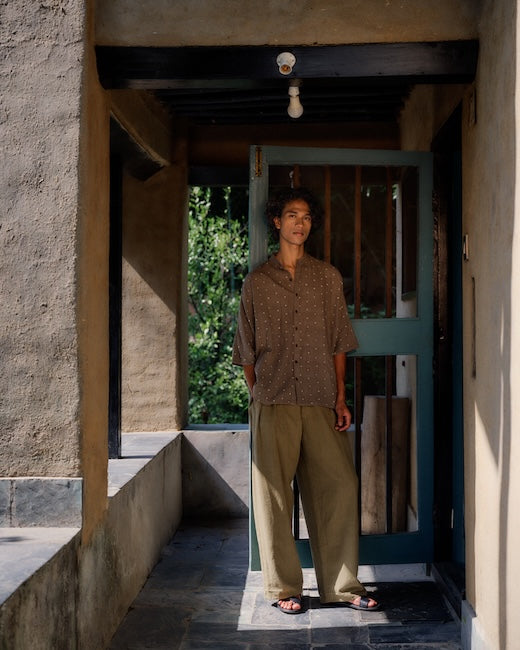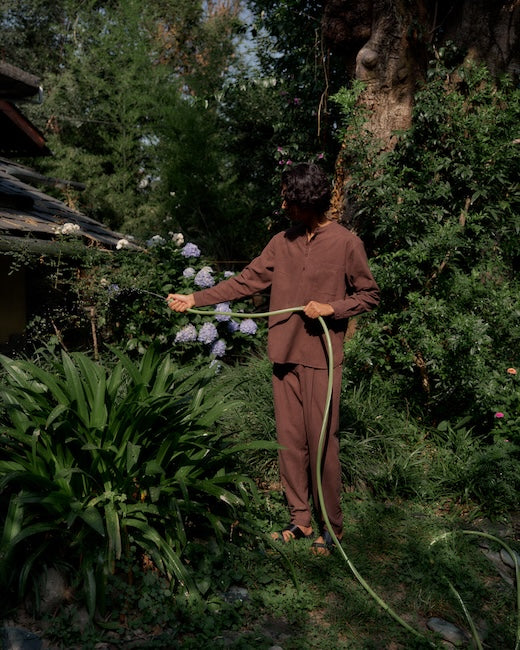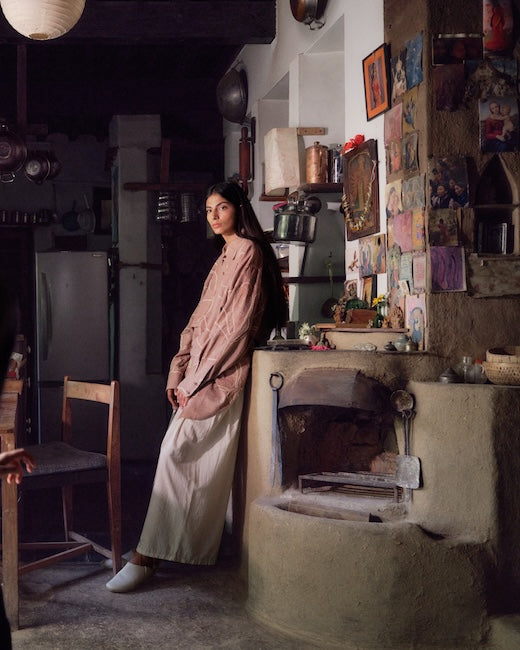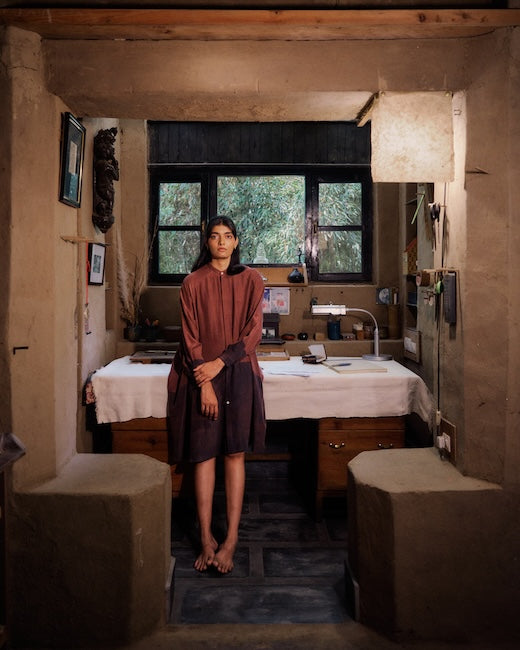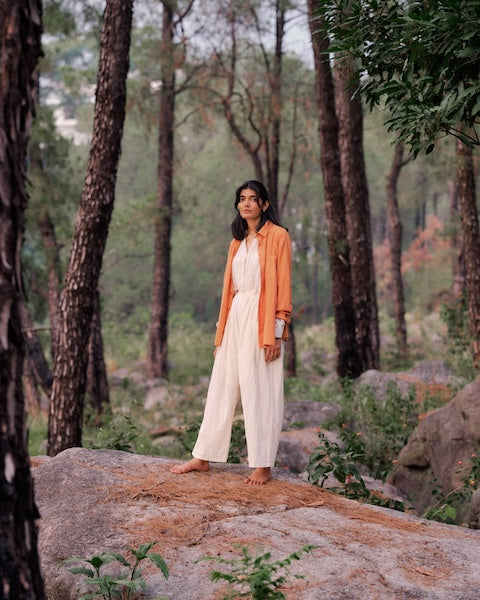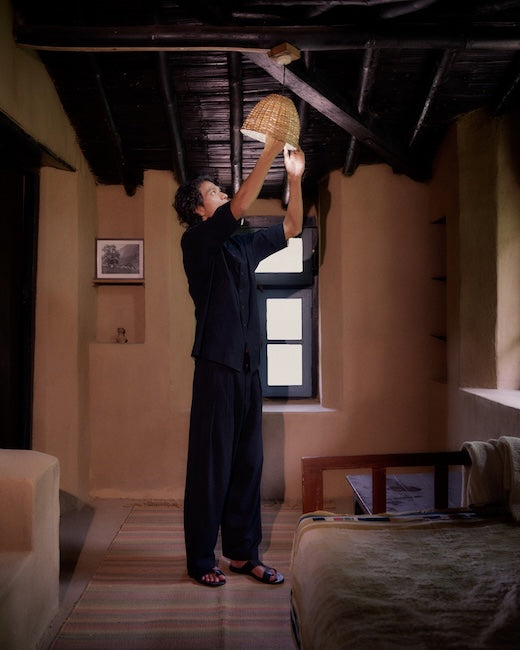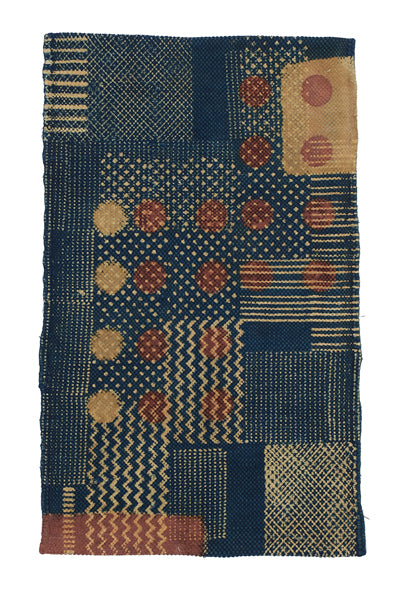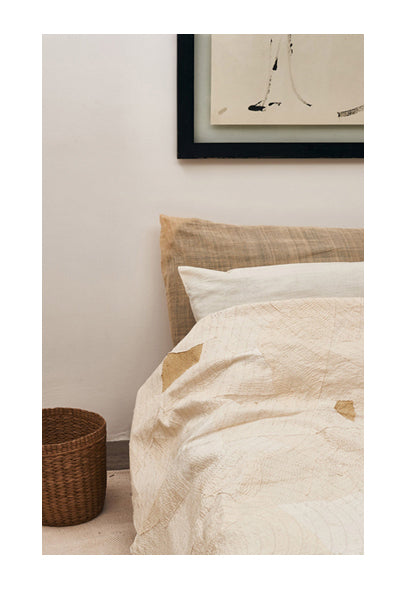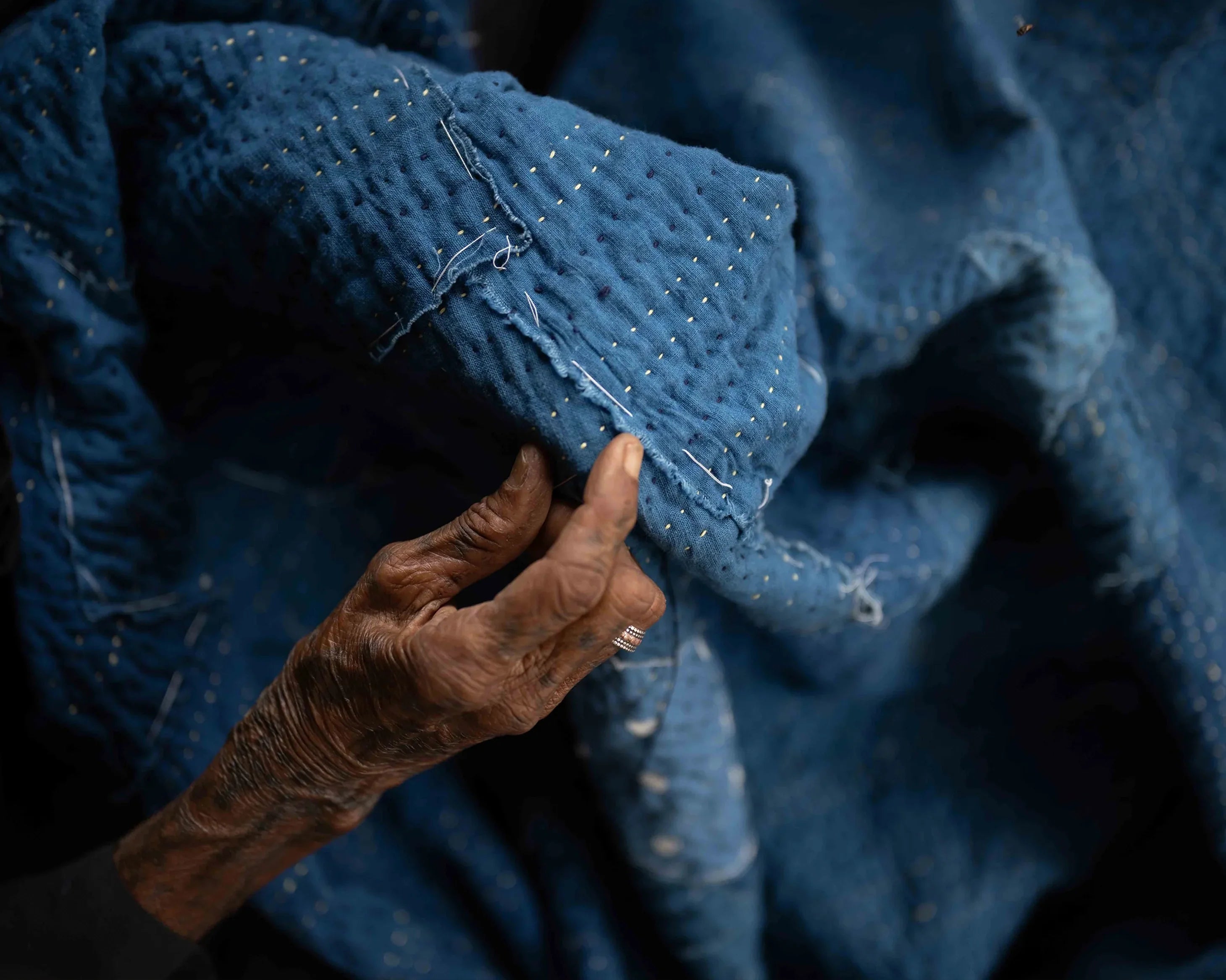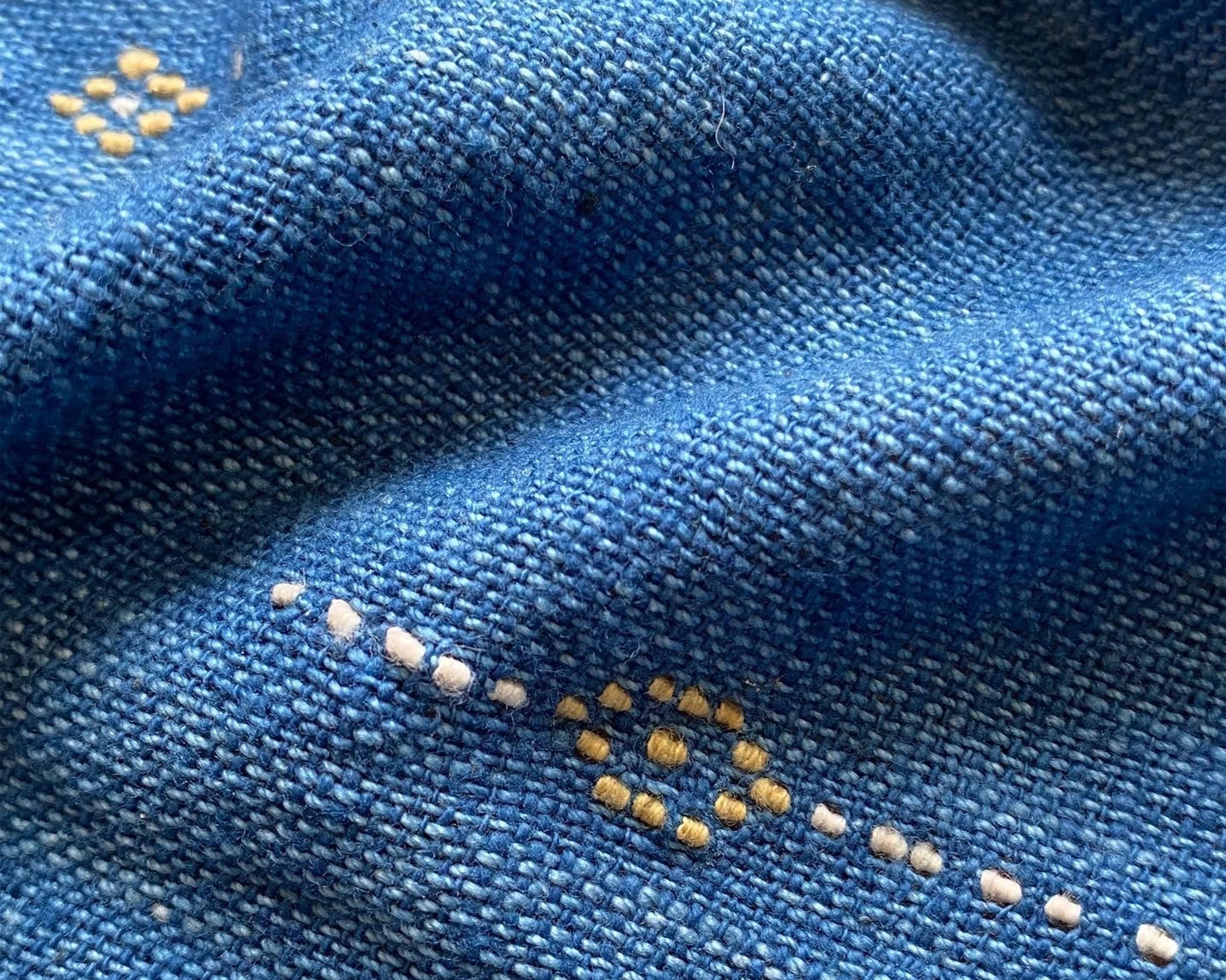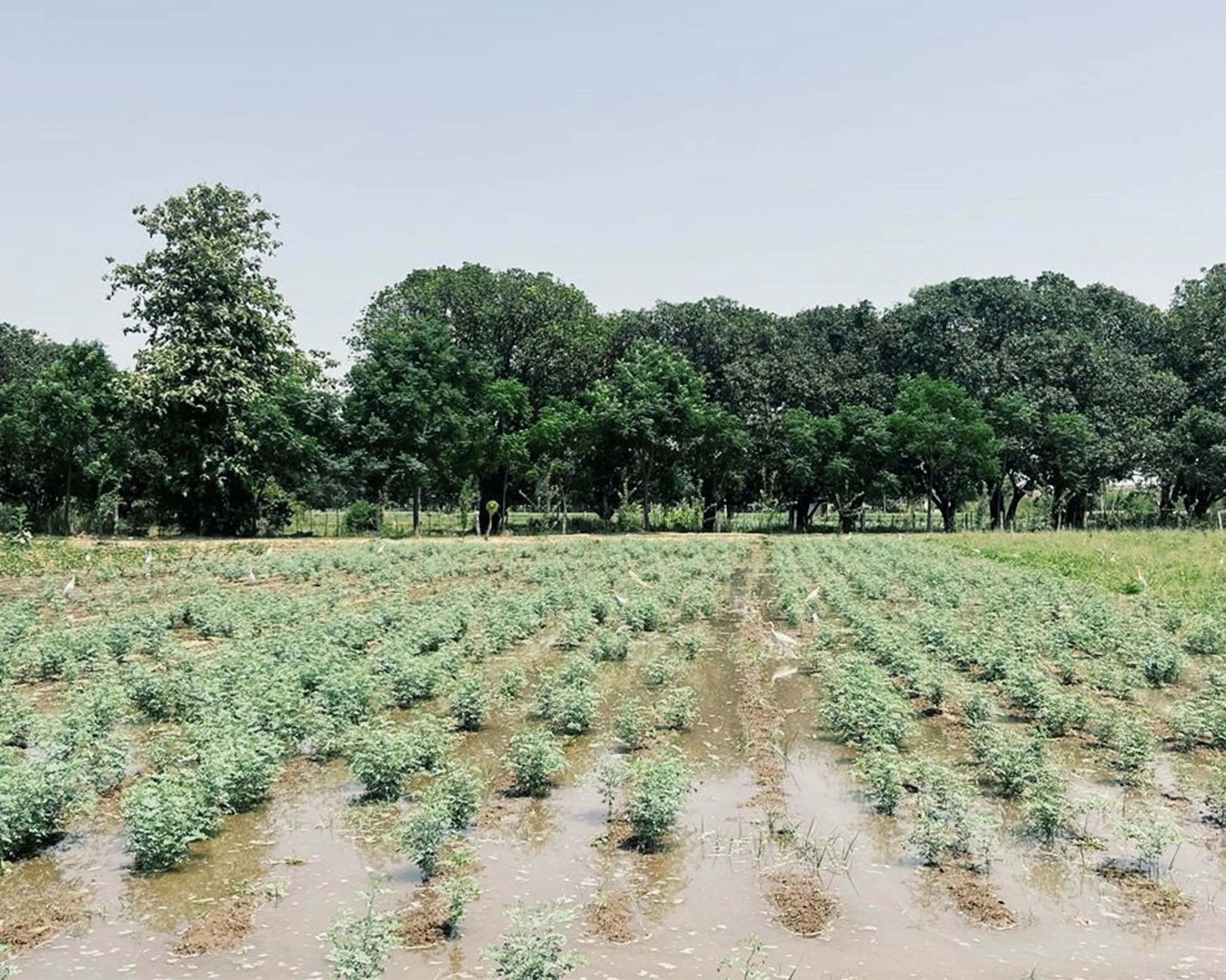
The Cultivation of Indigo in Hapur: A Journey into Natural Dyeing

At 11.11 / eleven eleven, our venture into indigo began with a strong dedication to indeginous and traditional methods. We embarked on this journey by experimenting with Indigo cultivation on a 20,000 square-foot plot in Hapur.
Our learning of biodynamic farming originates from esteemed BhaiKaka Krishi Kendra of Dr. Sarvadaman Patel's in Gujarat. Drawing from this rich knowledge base, one of our main objectives in studying indigo, from seed to pigment, is to enhance the indigotin content. We aimed to achieve this by implementing biodynamic farming practices and ensuring the optimal conditions for growth at every stage, from seed to plant.
Hapur, just 50 kms from Delhi, was ideal for our indigo cultivation because it holds historical significance, being the same land where indigo was traditionally grown 60 years ago.

Hand sowing, Hapur

This holistic approach involves several key practices, starting from ploughing and enriching it with organic compost and making it weed-free. Instead of broadcasting, we hand-sowed each seed one foot apart to ensure even growth, giving each plant ample space and resources. We also used biodynamic preparations to boost soil fertility and plant health. We have not only improved the overall growth conditions for our indigo plants but also achieved a higher indigotin content in our indigo dye compared to conventional methods.
While farmers usually harvest about 4 kg of indigo pigment per acre, we successfully managed to achieve 185% more yield by employing precise hand sowing, utilising biodynamic preparations, and effectively managing water, sunlight and regular weeding.

Indigofera Tinctoria, flower bud





